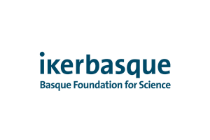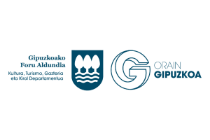 Past events: Chiara Cantiani. Early electrophysiological markers in language and learning impairment: long-term follow-up from infancy to pre-school age and impact of early training
Past events: Chiara Cantiani. Early electrophysiological markers in language and learning impairment: long-term follow-up from infancy to pre-school age and impact of early training
Chiara Cantiani. Early electrophysiological markers in language and learning impairment: long-term follow-up from infancy to pre-school age and impact of early training
What: Early electrophysiological markers in language and learning impairment: long-term follow-up from infancy to pre-school age and impact of early training
Where: BCBL Auditorium and zoom room # 2 (If you would like to attend to this meeting reserve at info@bcbl.eu)
Who: Chiara Cantiani, PhD, MEDEA BabyLab, Scientific Institute IRCCS Eugenio Medea, Bosisio Parini, Italy
When: Thursday, Feb 22nd at 12:00 PM noon.
In this presentation, I will report the findings of a large Italian longitudinal study. Around 250 infants with and without familial risk for language and learning impairment (defined as having a first-grade relative affected) have been tested between 6 and 12 months of age by means of different electrophysiological tasks tapping auditory processing skills (Cantiani et al. 2016) and neural entrainment to speech and non-speech stimuli (Cantiani et al., 2022). As part of the longitudinal study, infants underwent a linguistic assessment at 20, 24, 36 months of age, and a broad neuropsychological assessment (including pre-reading skills) at 4,5 and 5,5 years of age. A subgroup of typically developing infants (n=15) participated between 7 and 9 months of age to an early rhythmic training providing exposure to and active synchronization with complex musical rhythms (Dondena et al., 2021). The main findings of the study include (1) the investigation of the typical and atypical electrophysiological patterns and the identification of early risk markers for language and learning impairment; (2) the definition of clinical typical and atypical developmental trajectories and of the associations between the early electrophysiological patterns and concurrent/later language and neuropsychological skills; (3) the preliminary assessment of the impact of the early rhythmic training on the electrophysiological patterns and on early language skills. The present results may have theoretical benefits in better understanding typical and atypical developmental trajectories of language acquisition and clinical implications in the development of more effective and specific early interventions.









